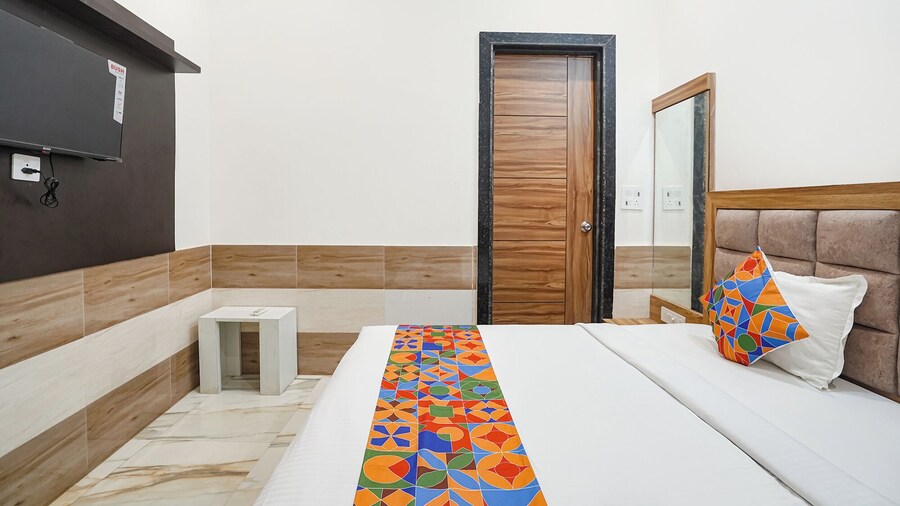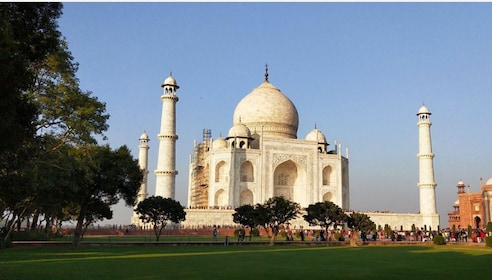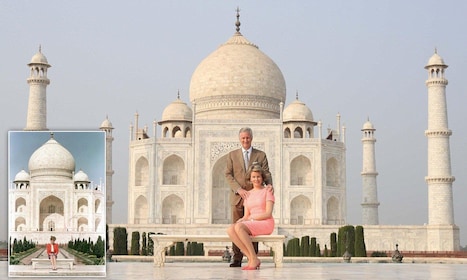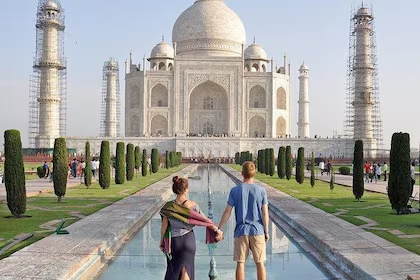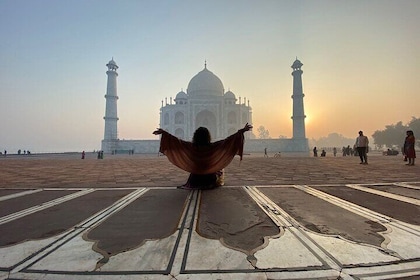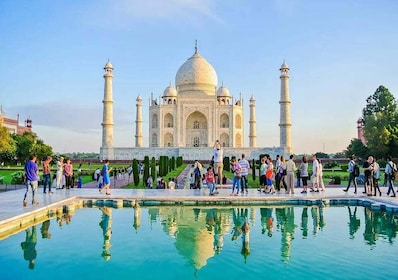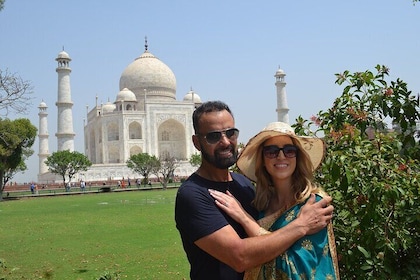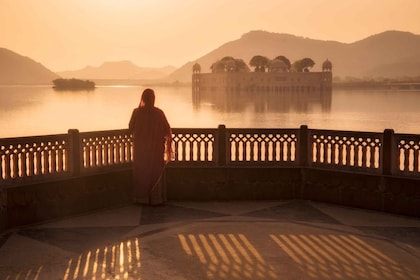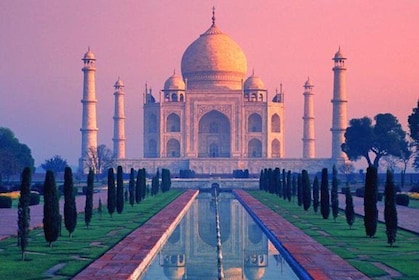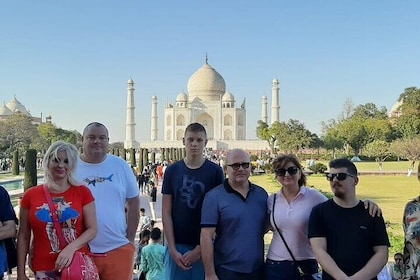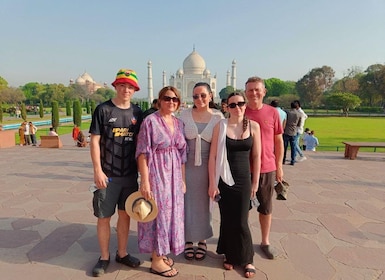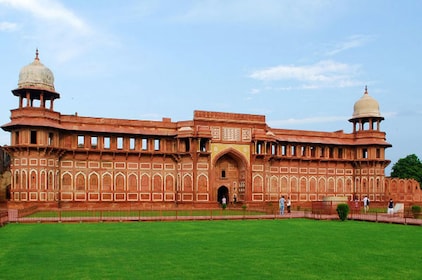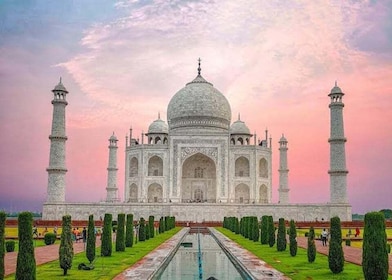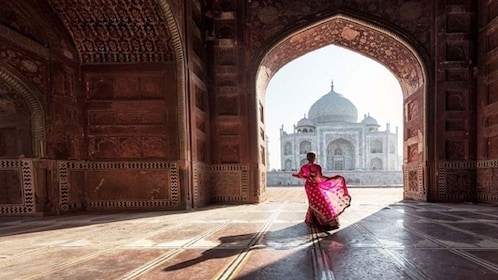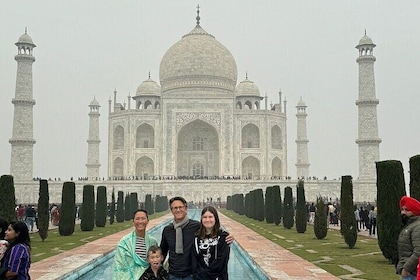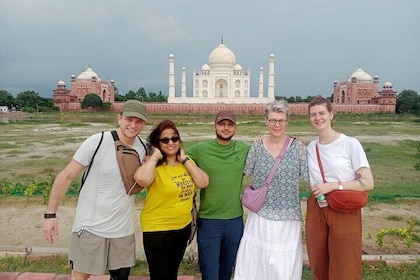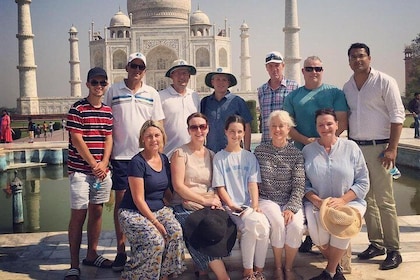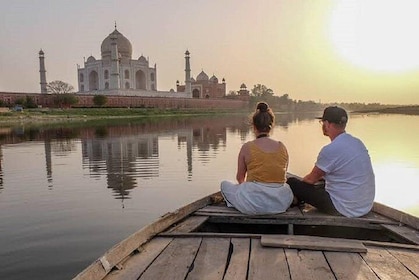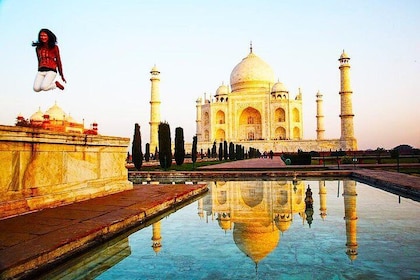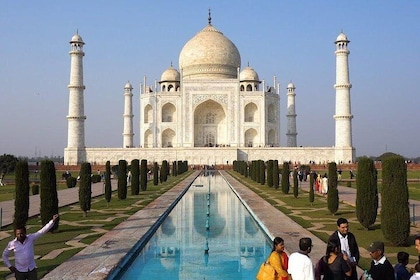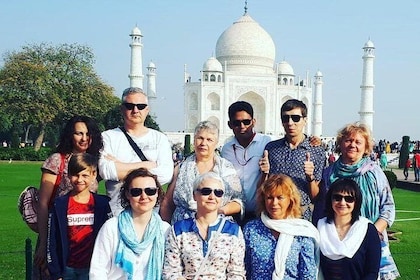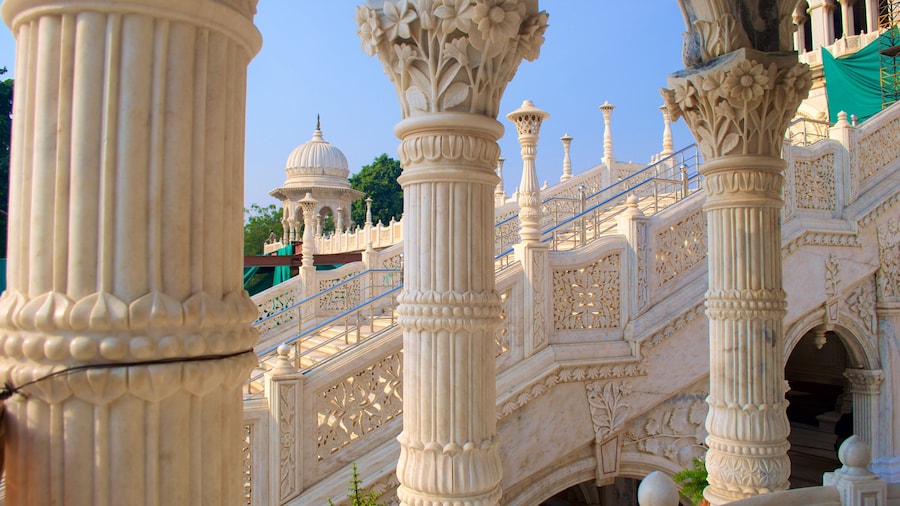With intricate detailing, expansive gardens and a sombre burial chamber, this splendid tomb is an apt tribute to one of the Mughal Empire’s greatest rulers.
In a city that is also home to such iconic Indian landmarks as the Taj Mahal and the Red Fort of Agra, the Tomb of Akbar the Great holds its own special appeal. Admire the artistry of the decorative detailing and observe wildlife grazing on the lush lawns in front of the tomb.
Akbar was one of the Mughal Empire's most influential rulers and is commonly known as “the Great.” The ornate and splendid designs reflect the status of this esteemed leader.
The complex's most popular entry point is Southgate, an arched edifice flanked by 70-foot (21-metre) minarets. Examine the white marble façade and note the geometric stucco decorations adorning the arch walls. You can also enter through the Westgate, where a Persian inscription states the date of the tomb's construction and the names of the designers responsible for it.
The inner gardens of the tomb complex stretch out over more than 100 acres (40 hectares) and are split up into quarters by brick-laid causeways. Walk the palm tree-lined paths and spot monkeys and antelopes frolicking on the expansive lawns. Be aware that walking on the grass is not permitted.
At the intersection of the causeways, the central point of the complex, you’ll find the red sandstone mausoleum. Make your way around the building to see its columned façade and photograph its smooth domes. Inside, blue and gold detailing decorate the walls of the first floor.
Down in the burial chamber, Akbar's cenotaph sits atop a rectangular pyramid. Note the austere, bare walls, which were left unadorned out of respect to the ruler.
The tomb of Akbar the Great is a short rickshaw ride northwest from downtown Agra. There is an admission fee for the complex and it is open from sunrise to sunset. Guided tours are available. Visit the tomb early to see the eastern face of the building dramatically illuminated by the morning sun.






